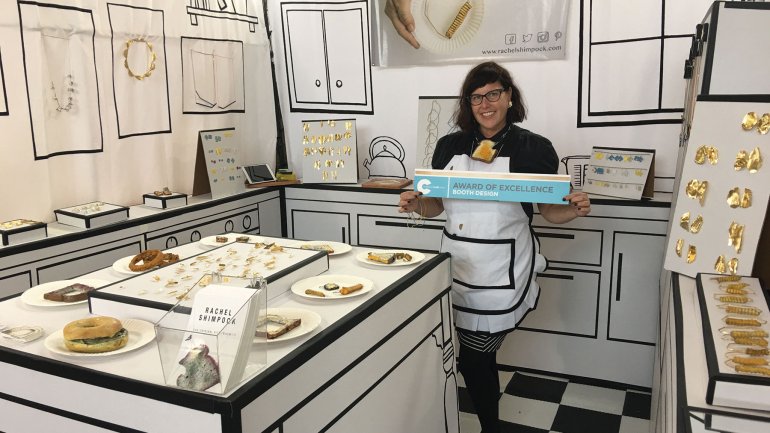Good Work Is Not Enough
Good Work Is Not Enough
Sometimes when I see artists at a craft show, selling their work, I daydream about having a booth myself. I wonder: Would I be the cheerful potter surrounded by customers? Or maybe the chatty weaver who loves to explain her process?
But my secret fear is that I’d be that frowning guy in the corner, barricaded behind a counter, glued to my phone. By day three, my aloof body language would be a full-blown force field, keeping people 10 feet away. And if you could see my thought bubbles, you’d read: “Damn, why aren’t people buying?” and “My work sucks” and “How will I pay the rent?”
If you’ve been to a craft show, you might have seen these artists who are their own worst enemies. Instead of connecting with potential customers and throwing themselves into sales, they withdraw. And, no doubt, their sales suffer.
Being a successful artist requires much more than producing work people want to see and buy. So for this issue we talked to busy artists about the other skills they tap: sales, yes, but also bookkeeping, customer service, social media and marketing, pricing, branding, innovation, even self-care.
Nobody is good at everything. All of us have what my business consultant friend calls “spikes and flat spots.” Artists need to know what they’re good at – their way with clay and their knack for promotion, for example. Show artist Rachel Shimpock works her magic on people. “I get my butt in the aisle and make eye contact,” she says. “Sometimes a simple hello can make all the difference.”
But artists shouldn’t lean too heavily on what comes easily. If they’re going to succeed, they need to look hard at their weaknesses, uncomfortable as that might be, and decide how to compensate for them. Sculptor Gabriel Dishaw keeps an eye out for people who can complement him. A while back, he took on a client who happens to be a creative director, “and he ended up putting together an entire branding kit for me,” Dishaw says. The artist found somebody with a happy spike, and he didn’t even have to find out if it was a flat spot for him.
Leigh Suggs learned business skills working for a design firm; she uses them now, as an artist. “I learned quite a bit about managing cash flow, writing contracts, following up on invoices, good business practices, and, of course, customer service skills. Each of these things applies to my studio in some way,” she says.
Some of the critical skills are more subtle – knowing your body’s needs and rhythms, for instance. “My studio practice is much better when I get exercise,” Eleanor Anderson says. “When I am literally moving forward, my thoughts also tend to move forward, instead of getting stuck.”
Running an art business can be tough. Furniture maker Nancy Hiller compares her livelihood to pregnancy. “In between the joy of conception and the joyousness of holding the infant in your hands, there is plenty of morning sickness, and there are plenty of trials,” she says. “There are frustrations.”
Fortunately, as the artists in this issue demonstrate, there are many ways to magnify the joys and minimize the frustrations. And watch that baby grow.

